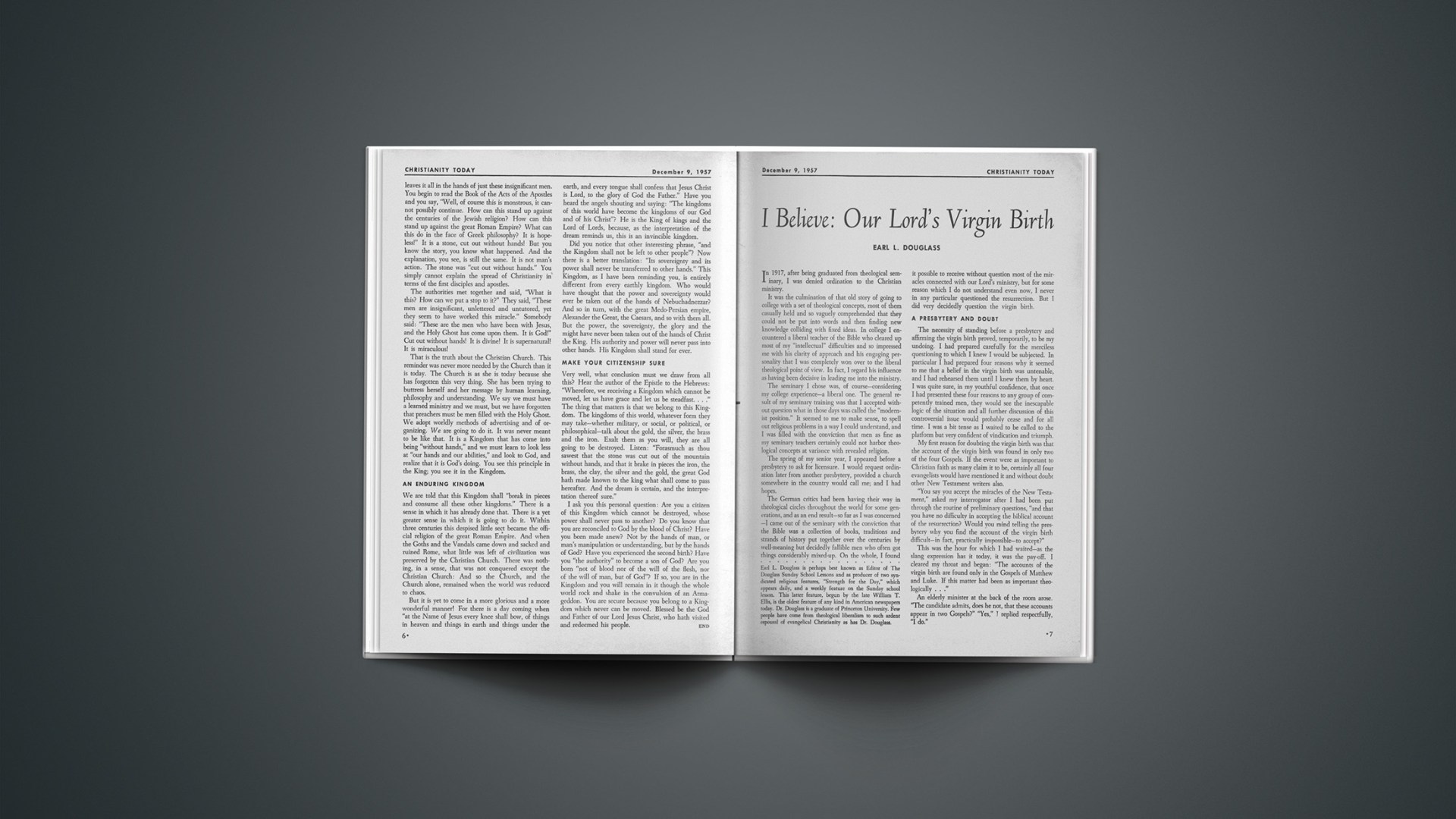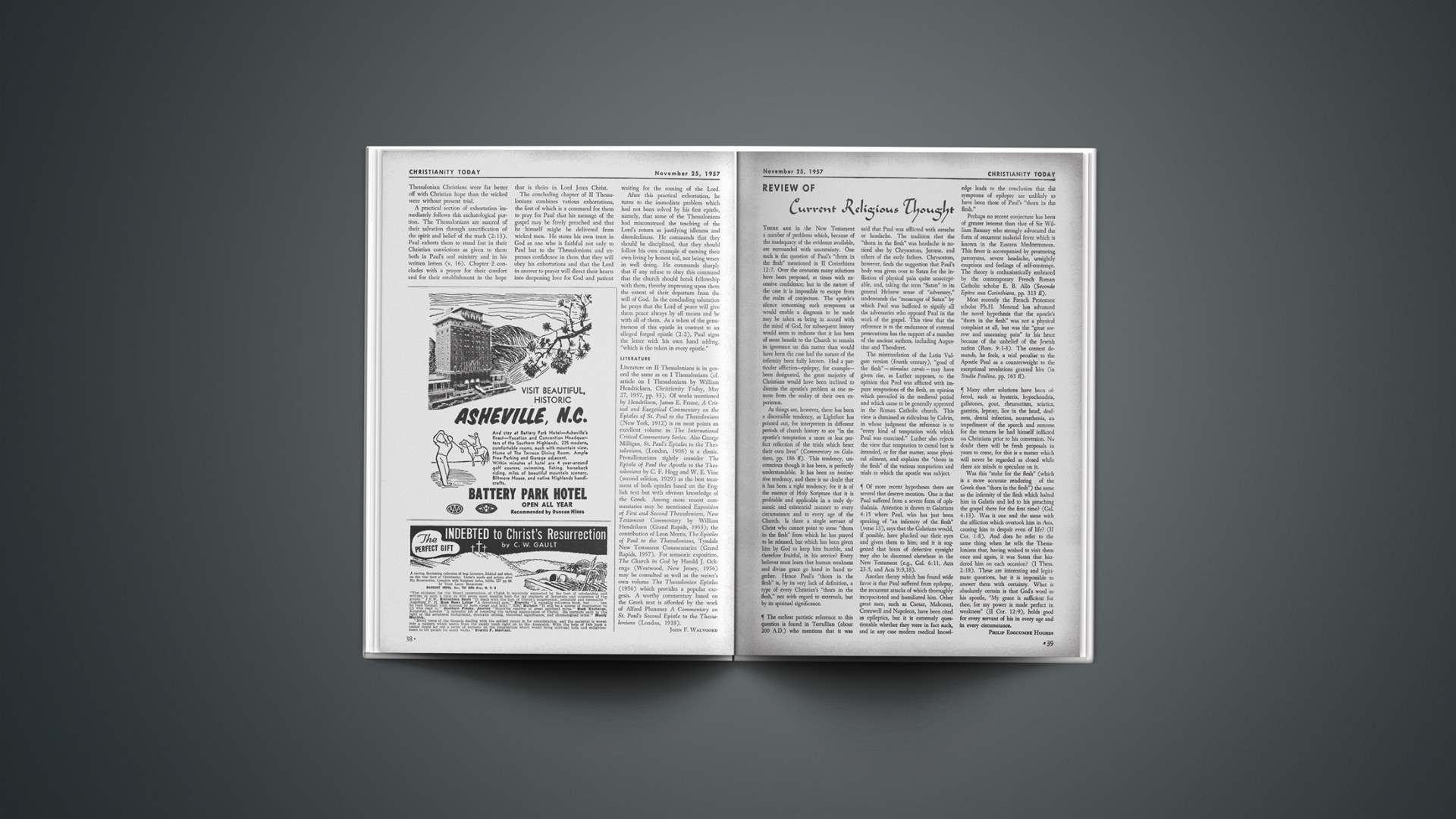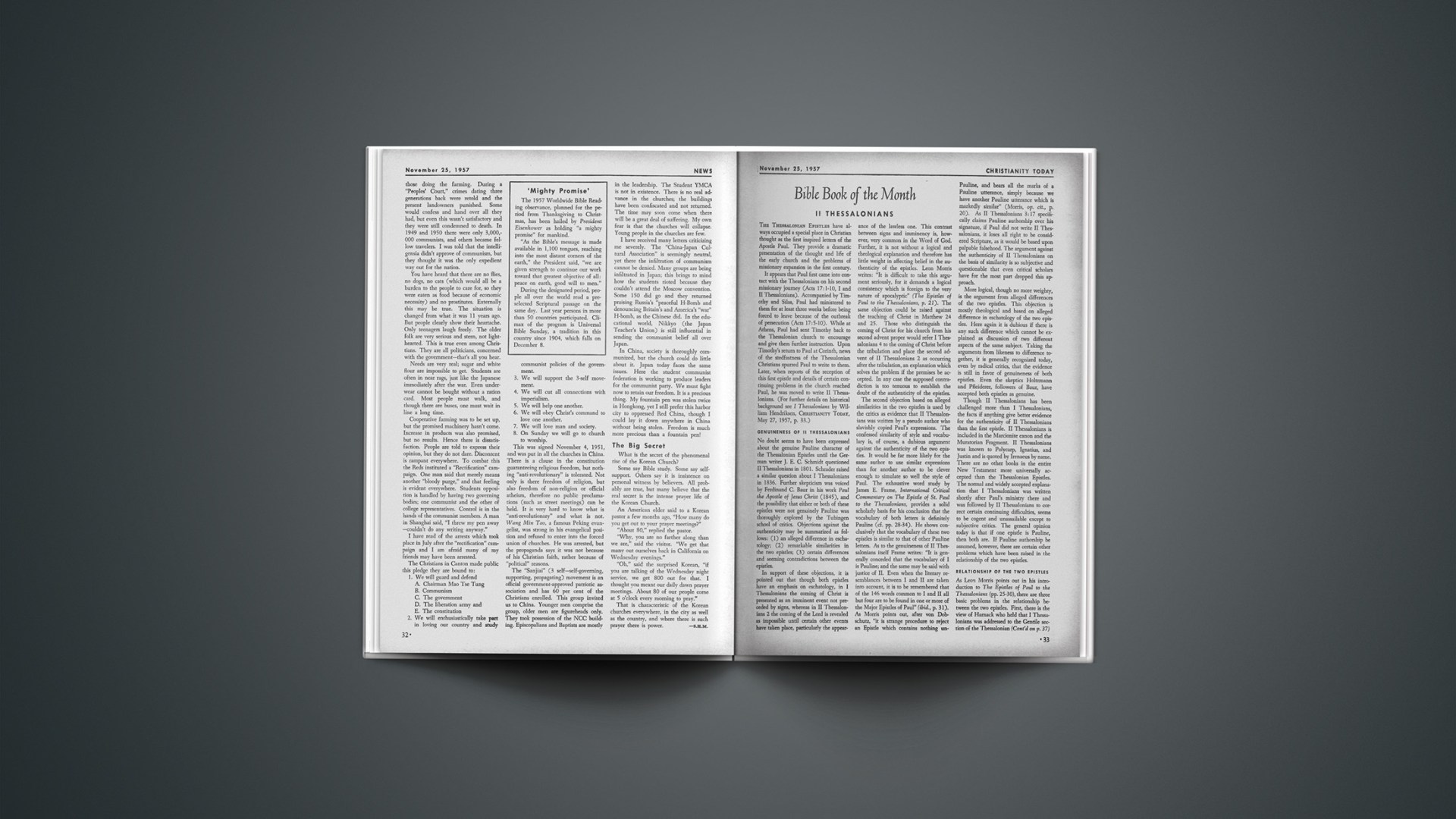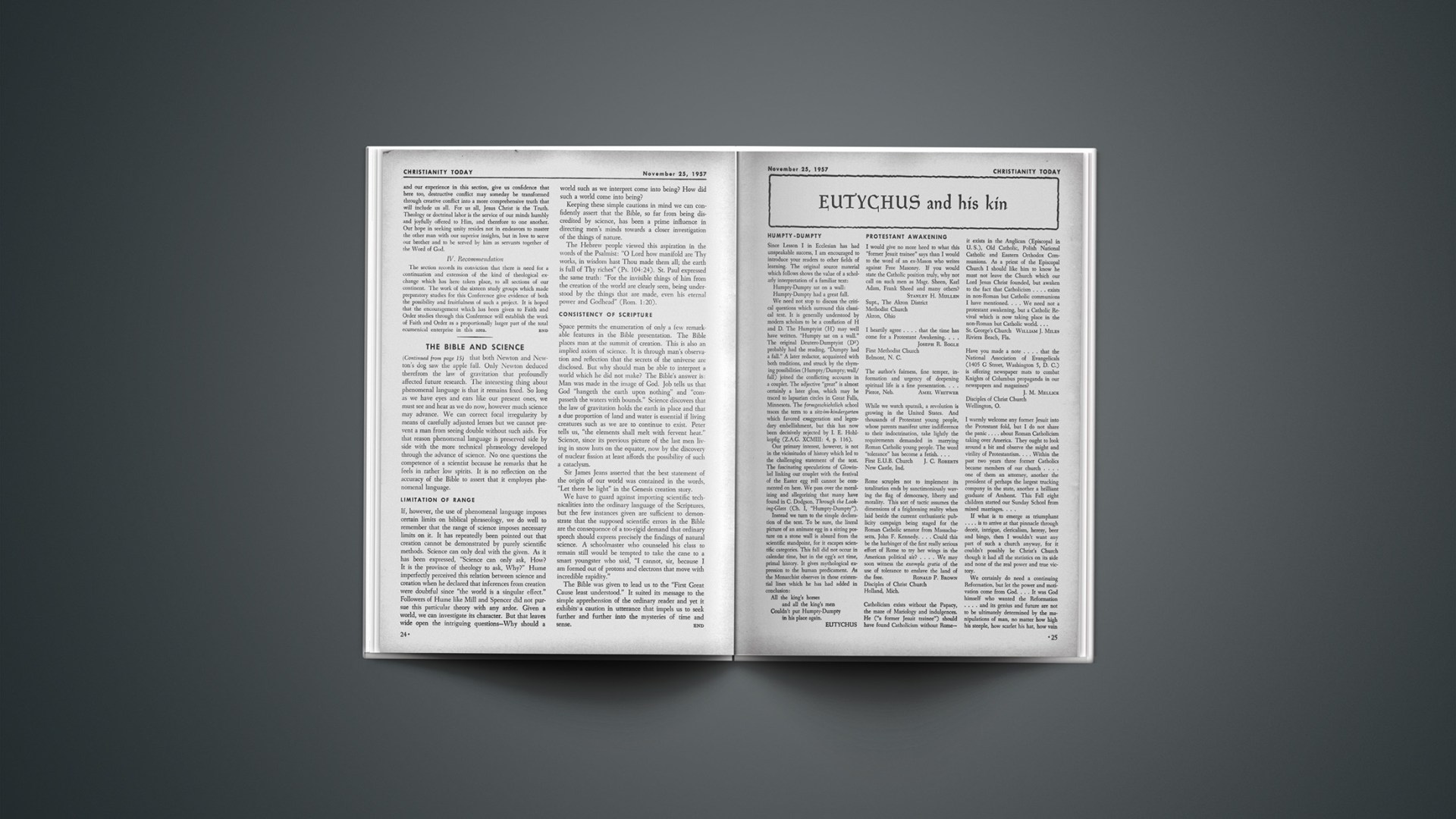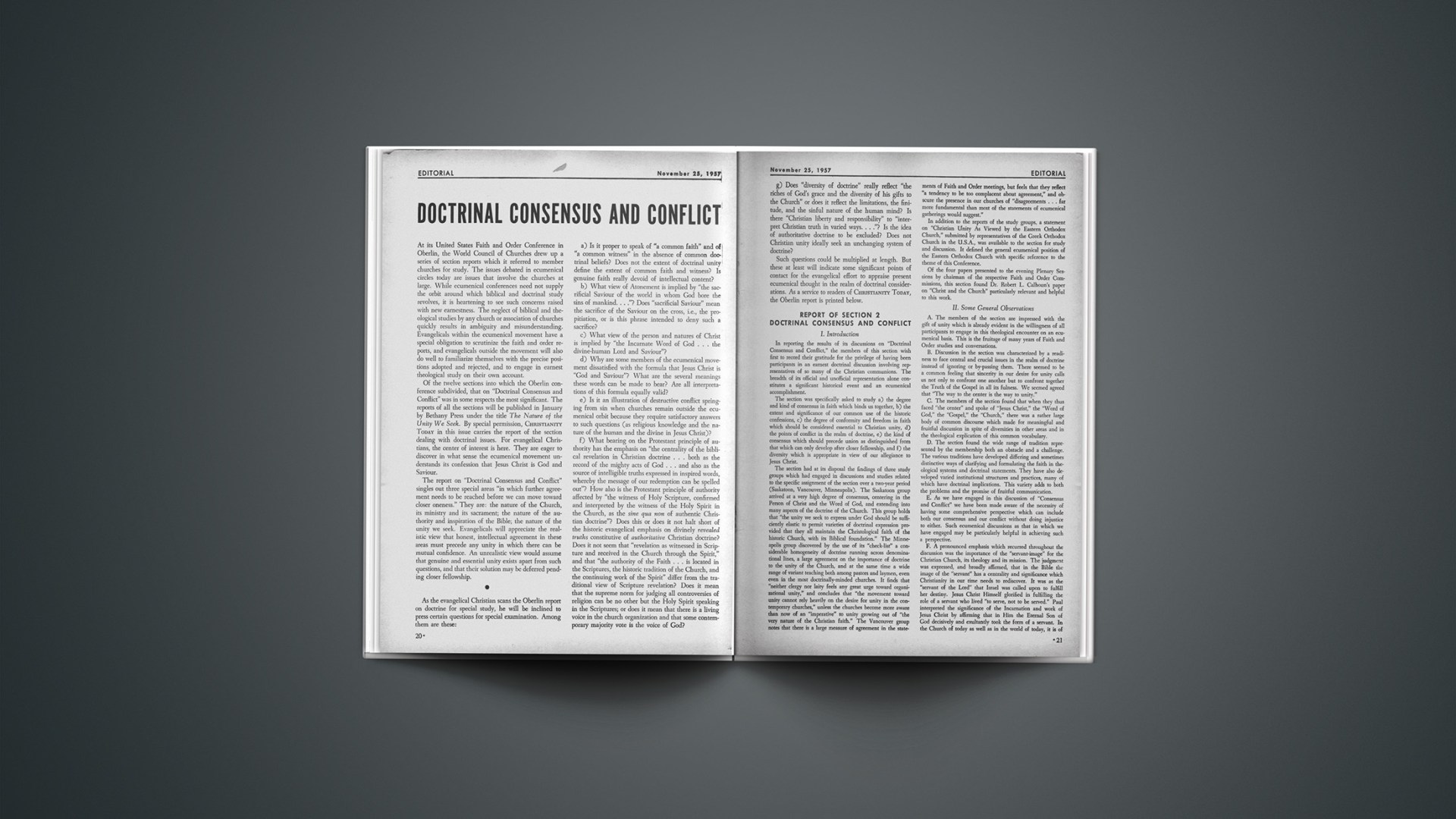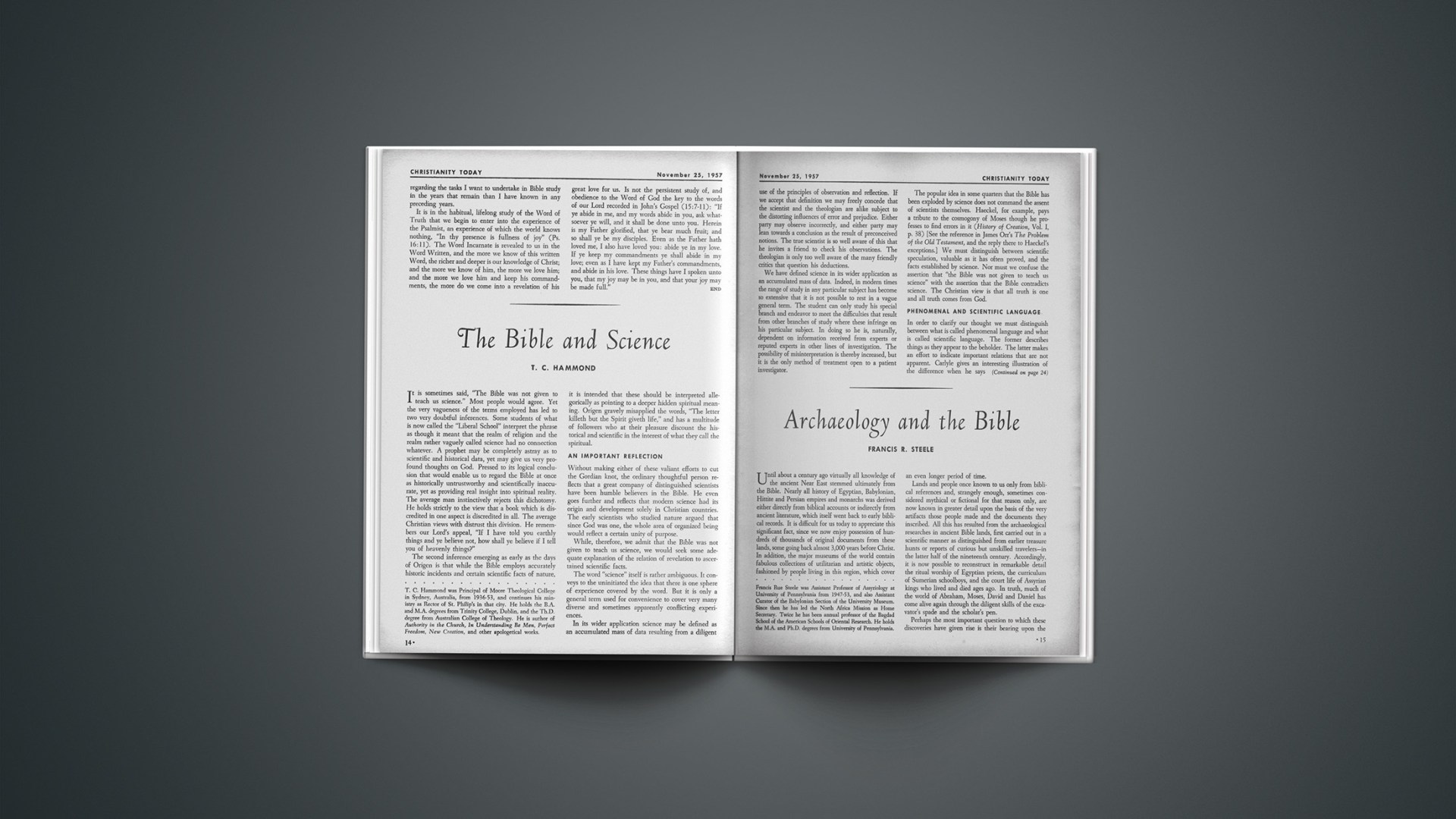In 1917, after being graduated from theological seminary, I was denied ordination to the Christian ministry.
It was the culmination of that old story of going to college with a set of theological concepts, most of them casually held and so vaguely comprehended that they could not be put into words and then finding new knowledge colliding with fixed ideas. In college I encountered a liberal teacher of the Bible who cleared up most of my “intellectual” difficulties and so impressed me with his clarity of approach and his engaging personality that I was completely won over to the liberal theological point of view. In fact, I regard his influence as having been decisive in leading me into the ministry.
The seminary I chose was, of course—considering my college experience—a liberal one. The general result of my seminary training was that I accepted without question what in those days was called the “modernist position.” It seemed to me to make sense, to spell out religious problems in a way I could understand, and I was filled with the conviction that men as fine as my seminary teachers certainly could not harbor theological concepts at variance with revealed religion.
The spring of my senior year, I appeared before a presbytery to ask for licensure. I would request ordination later from another presbytery, provided a church somewhere in the country would call me; and I had hopes.
The German critics had been having their way in theological circles throughout the world for some generations, and as an end result—so far as I was concerned—I came out of the seminary with the conviction that the Bible was a collection of books, traditions and strands of history put together over the centuries by well-meaning but decidedly fallible men who often got things considerably mixed-up. On the whole, I found it possible to receive without question most of the miracles connected with our Lord’s ministry, but for some reason which I do not understand even now, I never in any particular questioned the resurrection. But I did very decidedly question the virgin birth.
A Presbytery And Doubt
The necessity of standing before a presbytery and affirming the virgin birth proved, temporarily, to be my undoing. I had prepared carefully for the merciless questioning to which I knew I would be subjected. In particular I had prepared four reasons why it seemed to me that a belief in the virgin birth was untenable, and I had rehearsed them until I knew them by heart. I was quite sure, in my youthful confidence, that once I had presented these four reasons to any group of competently trained men, they would see the inescapable logic of the situation and all further discussion of this controversial issue would probably cease and for all time. I was a bit tense as I waited to be called to the platform but very confident of vindication and triumph.
My first reason for doubting the virgin birth was that the account of the virgin birth was found in only two of the four Gospels. If the event were as important to Christian faith as many claim it to be, certainly all four evangelists would have mentioned it and without doubt other New Testament writers also.
“You say you accept the miracles of the New Testament,” asked my interrogator after I had been put through the routine of preliminary questions, “and that you have no difficulty in accepting the biblical account of the resurrection? Would you mind telling the presbytery why you find the account of the virgin birth difficult—in fact, practically impossible—to accept?”
This was the hour for which I had waited—as the slang expression has it today, it was the pay-off. I cleared my throat and began: “The accounts of the virgin birth are found only in the Gospels of Matthew and Luke. If this matter had been as important theologically …”
An elderly minister at the back of the room arose. “The candidate admits, does he not, that these accounts appear in two Gospels?” “Yes,” I replied respectfully, “I do.”
Then in a voice which I am sure was plainly heard out on the street and probably a block away he thundered out: “Mr. Moderator, how often does the Holy Spirit have to speak to this young man before he hears?”
I was completely demoralized. To this day I cannot recall what the other three reasons were with which I confidently expected to demolish my inquisitors. I fell into halting speech. I stumbled over the most obvious and easy questions. At last they allowed me to leave the platform and agreed, amid some tittering, to allow me to be licensed. I could take my licensure and go on to some other presbytery. But look out!
Doubt Becomes A Habit
The next presbytery was indeed a lion’s den. The members made it perfectly evident from the beginning that they would stand for no shilly-shallying. They listened to my statement of belief in dour silence. Six month’s probation was their verdict. At the end of six months I was still of the same mind and they also. The church which had called me was just what I had dreamed of, but I had to pack my household goods and move on.
A presbytery of quite liberal-minded men at last ordained me. They took the very human position that a youngster just out of the seminary does not know much anyway, and after a few years in the ministry and a variety of good, hard knocks, he would probably get some theological sense hammered into his head.
I took my first church, was happy in my work, and the people very graciously indicated that they were happy with me. But as I look back on it now, I think my sermons through those years were carefully worked-out lectures on social problems. There was no real gospel (good news) in them. Something very decidedly was lacking.
Fifteen years passed, all happy years so far as I was concerned, and with a reasonable amount of what is usually termed “success.” My position came to be that whether the virgin birth had occurred or not, of one thing I was very sure—the doctrine was not a matter of any real consequence. One could believe it or disbelieve it, and the result would be the same.
At last there arose in my denomination a controversy which I felt could easily be resolved if the contending parties would just read the New Testament and follow the directives plainly stated there. “Can’t they read?” I kept asking myself, and my colleagues as well when the subject was being discussed. “It’s right there in the Gospels, as plain as day. Let them read, and see, and accept and obey.”
Reading And Believing
Then one day three words hit me with the force of a battleship broadside. The words were: “Can’t you read?” The virgin birth is related in two of the four Gospels, in fact in the only two which deal with the birth and childhood of Jesus. The fact was borne in upon me with relentless insistence that if I was so firm in my demand that others read the New Testament and obey, I had better do something about my own doubts and disparagements.
I had long been convinced that belief is—to some extent at least—under the control of the will. I decided, therefore, that in the interest of consistency I would accept the biblical account of the virgin birth, affirm it to be true and believe it by an act of the will. I did so and dismissed it from my mind. I was still, however, very decidedly under the conviction that, apart from logical consistency, acceptance or denial of this doctrine was not a matter of any consequence.
An Essential Modern Doctrine
Then there was borne in upon my mind, as there has been borne in upon the minds of many others, the truth of the statement made by Anselm almost nine centuries before: “I cannot understand a religious truth until I first believe it.” Within six months I began to awake to the realization that I was coming to see that the virgin birth is important—is right now in this twentieth century, as it was to the believers two thousand years ago.
Let me skip twenty-five years and come to this present hour. I now believe not only that the virgin birth is true, but that it is an essential doctrine. I do not believe that the virgin birth is the only explanation of the deity of Christ, but accepting the fact that Jesus was the incarnate Son of God, it appears to me that a belief in the virgin birth is logically inevitable.
Who could be the father of the Son of God, but God himself? In dealing with Christ, we are not dealing with just another human being. This Being is the Only Begotten. He is as different from us as divinity is different from humanity, yet he is one divine person, in two natures: divine and human. In him God caused the Word to become flesh. He wrapped the vesture of the flesh about this second Person of the Godhead. God might have sent the Saviour into the world in any one of a thousand, or perhaps a million ways, but the testimony of Scripture is that he chose to put him into the stream of human history by the means of birth. Such being the case, the awesome question is, Who could be the father of this child? Has any human being ever lived who could, with propriety, be designated for this honor?
The question answers itself. The Son of God, the only begotten, must have God as his father. Born of the Virgin Mary, conceived under the power of the Holy Spirit!
There are other reasons, I feel sure, why the doctrine should be accepted by believers. The integrity of Scripture is endangered if we do not. If Matthew and Luke were mistaken in the accounts with which both begin their Gospels, there is grave reason for believing that they may have been mistaken in many other events they recorded.
But Luke, especially, stands out as a competent historian, as careful in his research as any modern historian. Furthermore, his close association with Paul and the other disciples and his sojourn for two years at Caesarea, that center of Christian tradition, means that he had had the most intimate contacts with a multitude of persons who had seen Jesus, had heard him preach and had witnessed his miracles. Matthew, we are told, wrote “the Logia,” an account of the teachings of Jesus, and he must have written these within twenty years after the crucifixion. The virgin birth narratives have upon them the unmistakable marks of historical accuracy. Even the enemies of the early Church, who challenged almost every Christian doctrine, never challenged the accounts of the virgin birth.
The virgin birth is the divine certification of the fact that our salvation goes back directly to God. Our Saviour came from God, is God and represents in his being the coming down of God to us and the lifting up of our frail and sinful lives to God. The faith of the Church from the beginning has been that the delicate link which connects flesh and spirit was in this instance, when the salvation of mankind was at stake, accomplished by the direct action of supernatural power on the consecrated human nature of the Virgin Mary.
Let any believer, lay or clerical, accept this doctrine and allow it, under the power of the Holy Spirit, to teach him its lessons, and he will experience a lift of mind and soul, amazing and inspiring. Through it, God’s direct contact with the human soul and its needs is established.
Earl L. Douglass is perhaps best known as Editor of The Douglass Sunday School Lessons and as producer of two syndicated religious features, “Strength for the Day,” which appears daily, and a weekly feature on the Sunday school lesson. This latter feature, begun by the late William T. Ellis, is the oldest feature of any kind in American newspapers today. Dr. Douglass is a graduate of Princeton University. Few people have come from theological liberalism to such ardent espousal of evangelical Christianity as has Dr. Douglass.

